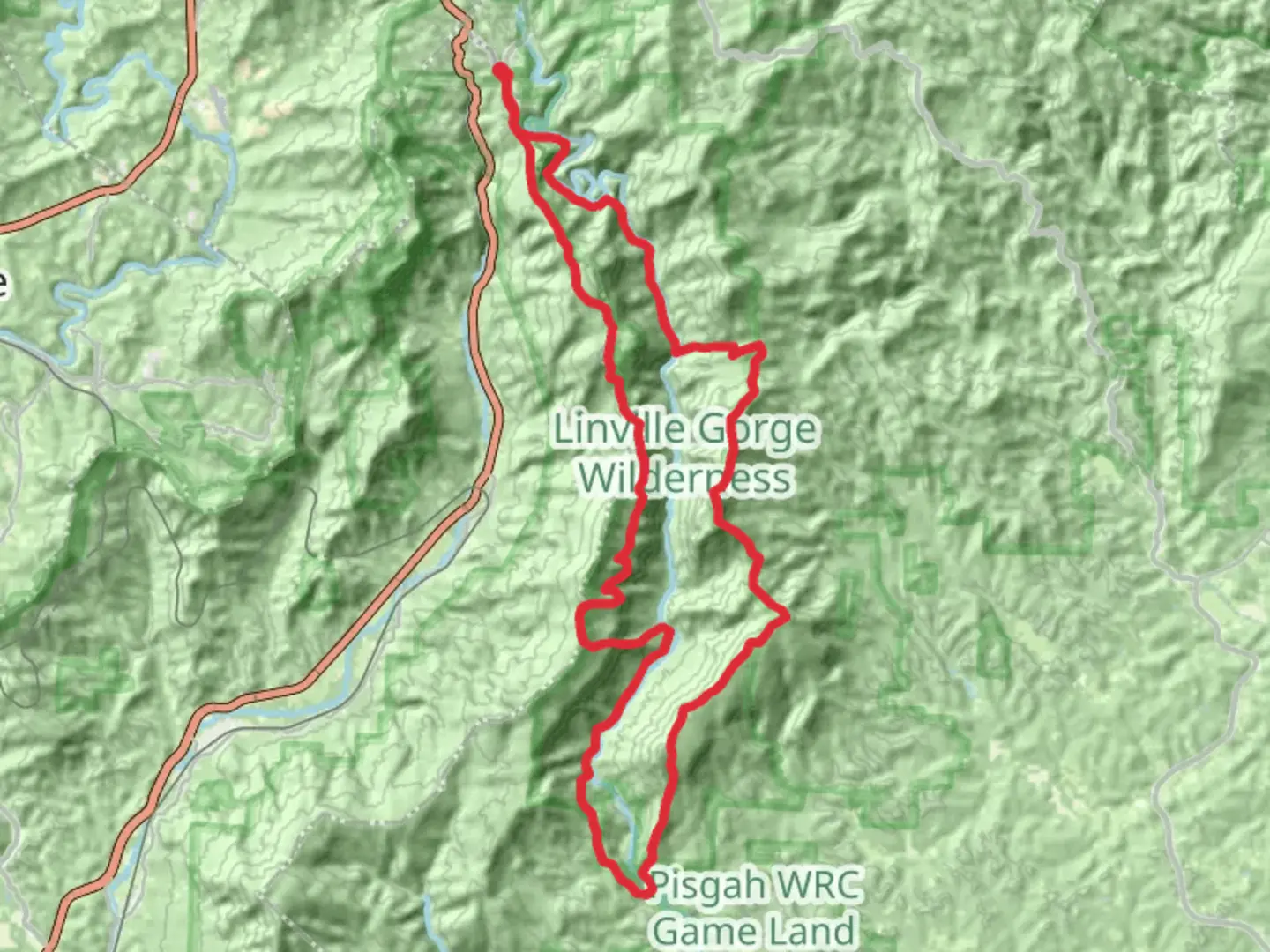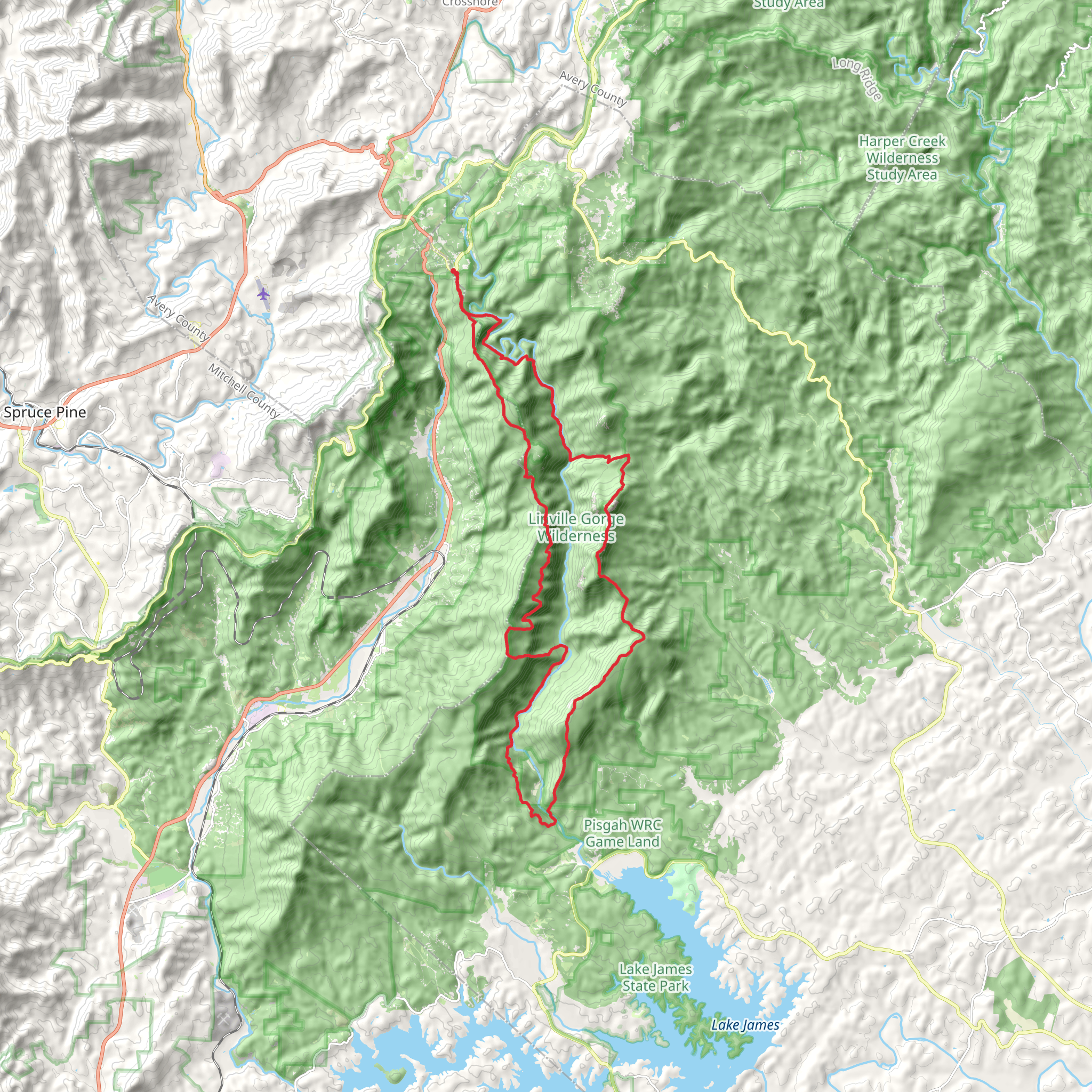
Download
Preview
Add to list
More
50.7 km
~3 day
3010 m
Loop
“Explore North Carolina's rugged beauty and history on this challenging, breathtaking wilderness trail loop.”
Nestled in the heart of North Carolina, the Linville Gorge Trail and Mountain to Sea Trail offer an exhilarating loop of approximately 51 kilometers (about 31.7 miles) with an elevation gain of around 3,000 meters (approximately 9,842 feet). This challenging trail is a paradise for seasoned hikers, offering a blend of rugged terrain, breathtaking vistas, and rich history.
Getting There
The trailhead is conveniently located near Burke County, North Carolina. For those driving, the most accessible route is via Interstate 40, exiting at Morganton and following NC-181 North to reach the Linville Gorge Wilderness Area. Public transport options are limited, so driving is recommended. Parking is available at several access points, including the Table Rock Picnic Area and the Linville Falls Visitor Center.
Trail Highlights
Linville Gorge Wilderness Area: Known as the "Grand Canyon of the East," Linville Gorge is one of the most scenic and rugged gorges in the eastern United States. The trail meanders through dense forests, steep cliffs, and rocky outcrops, offering panoramic views of the gorge and the Linville River below.
Table Rock Mountain: Approximately 8 kilometers (5 miles) into the hike, you'll encounter Table Rock Mountain, a prominent peak offering stunning views of the surrounding landscape. The climb is steep, with an elevation gain of about 610 meters (2,000 feet), but the vistas from the summit are well worth the effort.
Hawksbill Mountain: Another highlight is Hawksbill Mountain, located roughly 16 kilometers (10 miles) from the trailhead. This peak provides a breathtaking vantage point over the gorge and is a popular spot for photography and wildlife observation.
Flora and Fauna
The trail traverses a diverse ecosystem, home to a variety of plant and animal species. Hikers can expect to see rhododendrons, mountain laurels, and a mix of hardwood and coniferous trees. Wildlife enthusiasts may spot white-tailed deer, black bears, and a variety of bird species, including peregrine falcons and wild turkeys.
Historical Significance
The Linville Gorge area is steeped in history, with roots tracing back to the Cherokee Nation. The gorge was named after explorer William Linville, who, along with his son, was tragically killed by Native Americans in the 18th century. The region's rugged terrain has remained largely unchanged, offering a glimpse into the past and a sense of untouched wilderness.
Navigation and Safety
Given the trail's difficulty, it's crucial to be well-prepared. The terrain is challenging, with steep ascents and descents, rocky paths, and potentially slippery conditions. Hikers should use HiiKER for navigation to ensure they stay on track and are aware of any trail updates or closures. It's advisable to carry a detailed map, compass, and GPS device, along with plenty of water, food, and appropriate gear for changing weather conditions.
Planning Your Hike
Due to the trail's length and difficulty, many hikers choose to complete it over several days, camping at designated sites along the way. Permits are required for overnight camping in the Linville Gorge Wilderness Area, so be sure to secure one in advance. The best time to hike is during the spring and fall when temperatures are moderate, and the foliage is at its most vibrant.
Embarking on the Linville Gorge Trail and Mountain to Sea Trail is a rewarding adventure for those prepared for its challenges, offering a unique opportunity to experience the raw beauty and historical depth of North Carolina's wilderness.
What to expect?
Activity types
Comments and Reviews
User comments, reviews and discussions about the Linville Gorge Trail and Mountain to Sea Trail, North Carolina.
average rating out of 5
0 rating(s)
